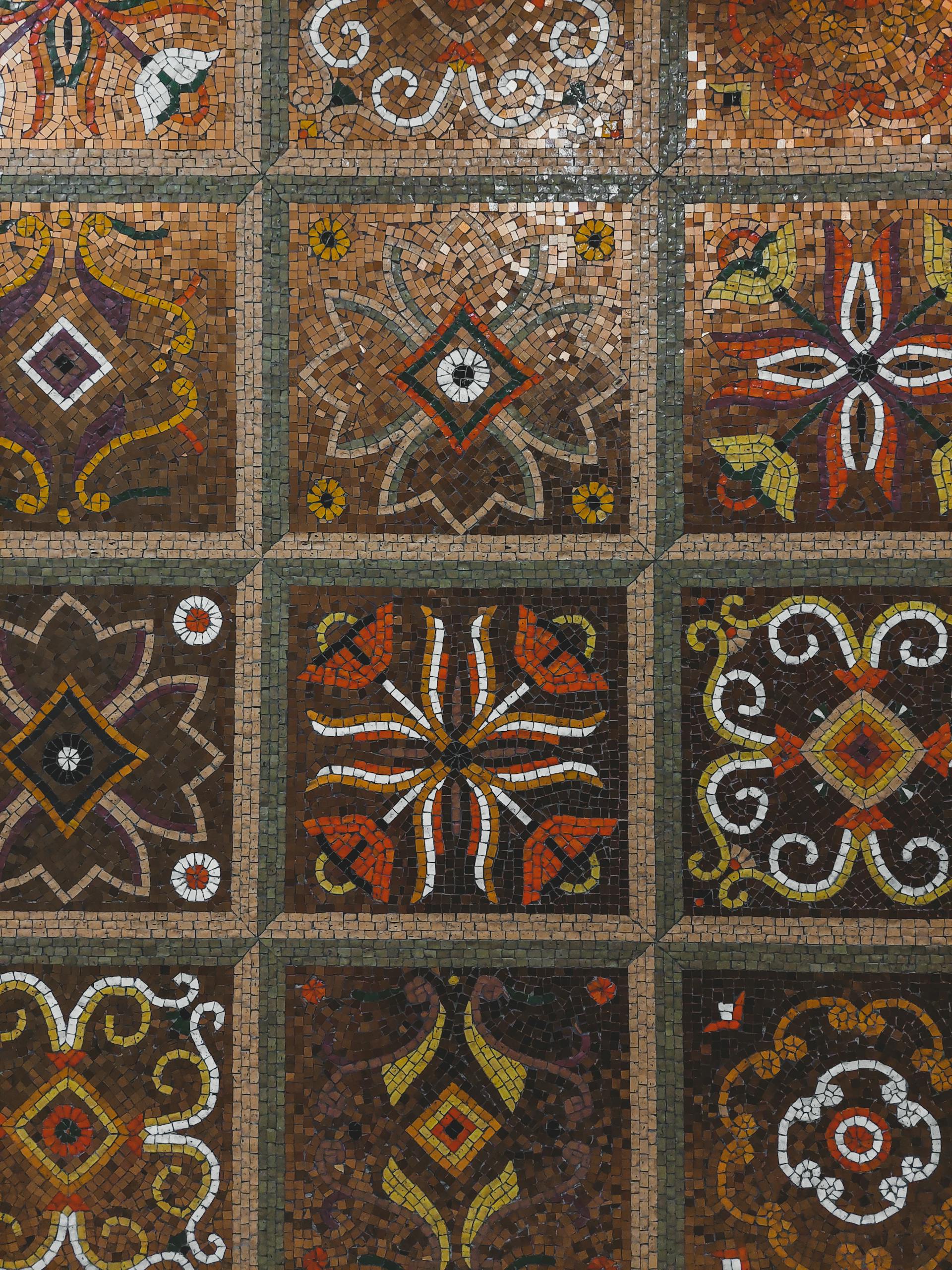Artistic and Historical Beginnings: Optical Illusions Through the Ages
The use of geometric marble in flooring dates back to ancient civilizations such as Egypt and Rome, but the intensive use of marble to create these patterns became prominent during the European Renaissance. During this period, artisans employed different colored marble pieces to produce visual effects that mimic depth and elevation on a flat surface.
Artists and architects of that era utilized perspective rules and geometric lines to evoke a sense of depth on floors that were actually flat.
How Marble Is Designed to Create Optical Illusions
The design process begins with meticulously drawing geometric models including three-dimensional cubes, interlocking triangles, and repeating shapes that generate diverse visual effects such as:
- Color Contrast: Using contrasting marble colors like black and white, or gray and beige, to emphasize the shapes.
- Repetition and Symmetry: Arranging pieces in a repetitive and organized manner to create a sense of movement and depth.
- Relative Scale: Playing with the size of pieces to direct the eye toward a certain point, expanding or narrowing the spatial perception.
The marble pieces are carefully cut to ensure color matching and precise fit, then polished to highlight color gradations and enhance the optical effect.

Impact on Perception and Architectural Spaces
Geometric marble floors create visual effects that directly influence how users perceive and experience a space, including:
- Altering Spatial Perception: Floors can appear deeper, higher, or more expansive than their actual dimensions.
- Enhancing Luxurious Atmosphere: The complexity and craftsmanship involved elevate the sense of exclusivity and sophistication.
- Guiding Movement: Patterns can subtly direct circulation paths and focal points within a room.
These floors act as dynamic components of architectural storytelling, transforming a simple surface into an interactive visual experience.
Contemporary Applications: Where Is This Technique Used Today?
In modern architecture, geometric marble flooring is favored in:
- Luxury Hotels and Residences: Where creating an impressive entrance or lobby with striking flooring is crucial.
- Cultural Centers and Museums: Enhancing visitor experience by playing with perception in exhibit spaces.
- Corporate Headquarters: To convey innovation and attention to detail through materiality and design.
Balancing Craftsmanship and Technology
While traditionally handcrafted, today’s production often integrates CNC cutting technology to achieve the precision required for complex geometric patterns without compromising artisanal quality. This blend of hand-finishing and machine accuracy allows for scalable implementation in larger projects.

Sustainability Aspect
Using natural marble with a long lifespan, combined with durable finishing techniques, ensures these flooring designs remain sustainable choices over time. Properly maintained, marble floors with geometric illusions can retain their aesthetic and functional value for decades.
Conclusion: Marble Flooring as a Spatial Illusionary Art
Geometric marble flooring transcends its role as a decorative element to become a powerful tool for manipulating spatial perception and enriching architectural experiences. By weaving optical illusions into the very ground we walk on, it invites us to rethink space, depth, and luxury in built environments.
More on INJ Architects:

Comments are closed.